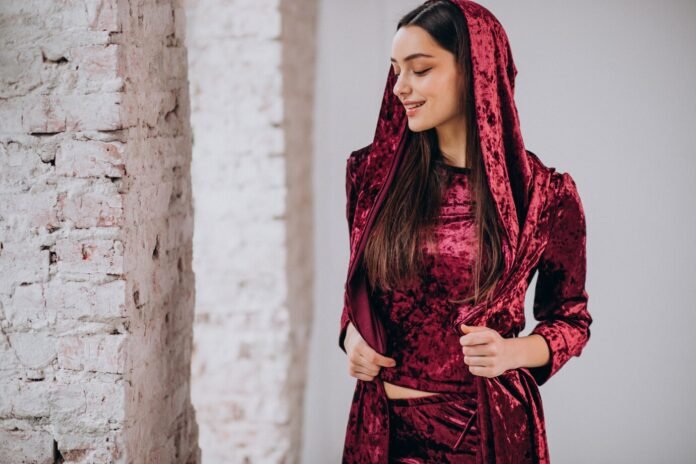Introduction:
Ouji fashion, also known as “Prince” or “Boystyle” within the larger Gothic Lolita fashion scene, draws its inspiration from the elegance and sophistication of aristocratic European fashion. Characterized by a combination of Victorian, Rococo, and Edwardian influences, this style evokes a sense of regality and charm. Ouji fashion breaks away from traditional femininity often seen in Lolita fashion by introducing elements that are both regal and masculine. The style includes tailored suits, high collars, lace details, ribbons, and waistcoats that are distinctly designed for those who wish to convey a noble, refined persona. This article will explore the key components of Ouji fashion, how to incorporate them into your wardrobe, and the role this style plays in contemporary fashion culture. Whether you’re drawn to the princely allure or the elegant tailoring, Ouji fashion remains an enduring expression of aristocratic sophistication in the modern world.
1. The Origins of Ouji Fashion: A Historical Perspective
Ouji fashion has its roots deeply embedded in the historical and cultural changes that shaped fashion in the 18th and 19th centuries. Its beginnings can be traced back to European aristocratic clothing, where young men and boys wore garments with highly structured designs, lace, and ruffles that signified their wealth and status. This traditional European elegance was later fused with the modern Japanese subculture of Lolita fashion in the late 1990s, creating a new and distinct style known as “Ouji.” Unlike traditional Lolita fashion, which is typically more feminine, Ouji style emphasizes masculine silhouettes while maintaining the romantic, vintage aesthetics of the past. Today, Ouji fashion continues to evolve, incorporating elements from different cultural periods and modern interpretations while retaining the foundation of its aristocratic origins.
2. Key Elements of Ouji Fashion: Style Breakdown
The core of Ouji fashion lies in its distinct components, which help define its noble and dignified look. Key items include tailored blazers, waistcoats, frock coats, and trousers made from rich fabrics like velvet, wool, and silk. High collars, lace detailing, and ornate buttons add a touch of grandeur to the outfit. Accessories such as cravats, bow ties, pocket watches, and knee-high socks often complement the outfit, offering a refined finish. Unlike typical casual wear, Ouji outfits focus on the structure and tailoring of each piece, often designed with a high level of craftsmanship. The emphasis on accessories is also important in creating a polished, aristocratic look. The clothing color palette tends to favor muted tones like navy, deep burgundy, dark green, and blacks, with occasional splashes of pastel or jewel tones, contributing to the overall regal and understated elegance.
3. The Role of Fabrics and Textures in Ouji Fashion
One of the defining features of Ouji fashion is the use of luxurious fabrics and textures. Velvet, satin, brocade, and lace are frequently used to add depth and visual interest to outfits. Brocade, a type of jacquard fabric with intricate patterns, is also a staple in fashion, typically seen in waistcoats or waist-length jackets. Lace is a delicate, ornamental touch that softens the look without losing its regal appearance. These fabrics, alongside textures like fine wool and silk, are key to achieving the elegant, aristocratic vibe that defines the style. Layering these fabrics strategically allows for the creation of rich, visually complex outfits that convey a sense of status and timeless fashion.
4. Styling Ouji Fashion: How to Incorporate It Into Your Wardrobe
Integrating Ouji fashion into your daily wardrobe can be an exciting yet challenging endeavor. The key is to balance the grandeur of aristocratic style with modern sensibilities. For beginners, start with smaller accessories like lace gloves, a cravat, or a pocket watch to bring an flair to more casual outfits. If you’re looking to commit fully to the style, invest in tailored blazers and waistcoats, mixing and matching them with high-waisted trousers or skirts for a balanced look. However, it’s important not to overdo it—keep your color palette limited to a few rich, classic tones, and avoid excessive ornamentation that might detract from the refined look. Layering, tailoring, and accessorizing carefully are all necessary to achieve the elegant yet playful charm of fashion without veering too far from its aristocratic roots.
5. Ouji Fashion in Modern Times: The Intersection of Tradition and Contemporary Style
Although Ouji fashion originated in the past, it has maintained its relevance in modern fashion circles through its blending of historical influence with contemporary trends. Today, many fashion enthusiasts embrace as a form of self-expression and a nod to vintage elegance. The style also intersects with cosplay and role-play culture, where individuals dress in fashion for themed events or conventions. As fashion continues to evolve, Ouji maintains a strong presence as a timeless style that transcends age and gender, offering a way to embrace historical elegance with a modern twist.
Conclusion: Embracing the Aristocratic Allure of Ouji Fashion
Ouji fashion continues to be an expression of sophistication and elegance, blending historical influences with a modern, whimsical twist. Whether worn as part of a larger Lolita ensemble or as a standalone style allows individuals to embrace the romance and regality of aristocratic fashion. By understanding the key elements that define this style—from the rich fabrics and textures to the carefully tailored silhouettes—you can begin to incorporate Ouji into your wardrobe and embody a princely persona. As the landscape continues to evolve, Ouji stands as a testament to the lasting appeal of aristocratic, refined elegance, appealing to those who wish to embody a world of nobility, grace, and timeless style.


